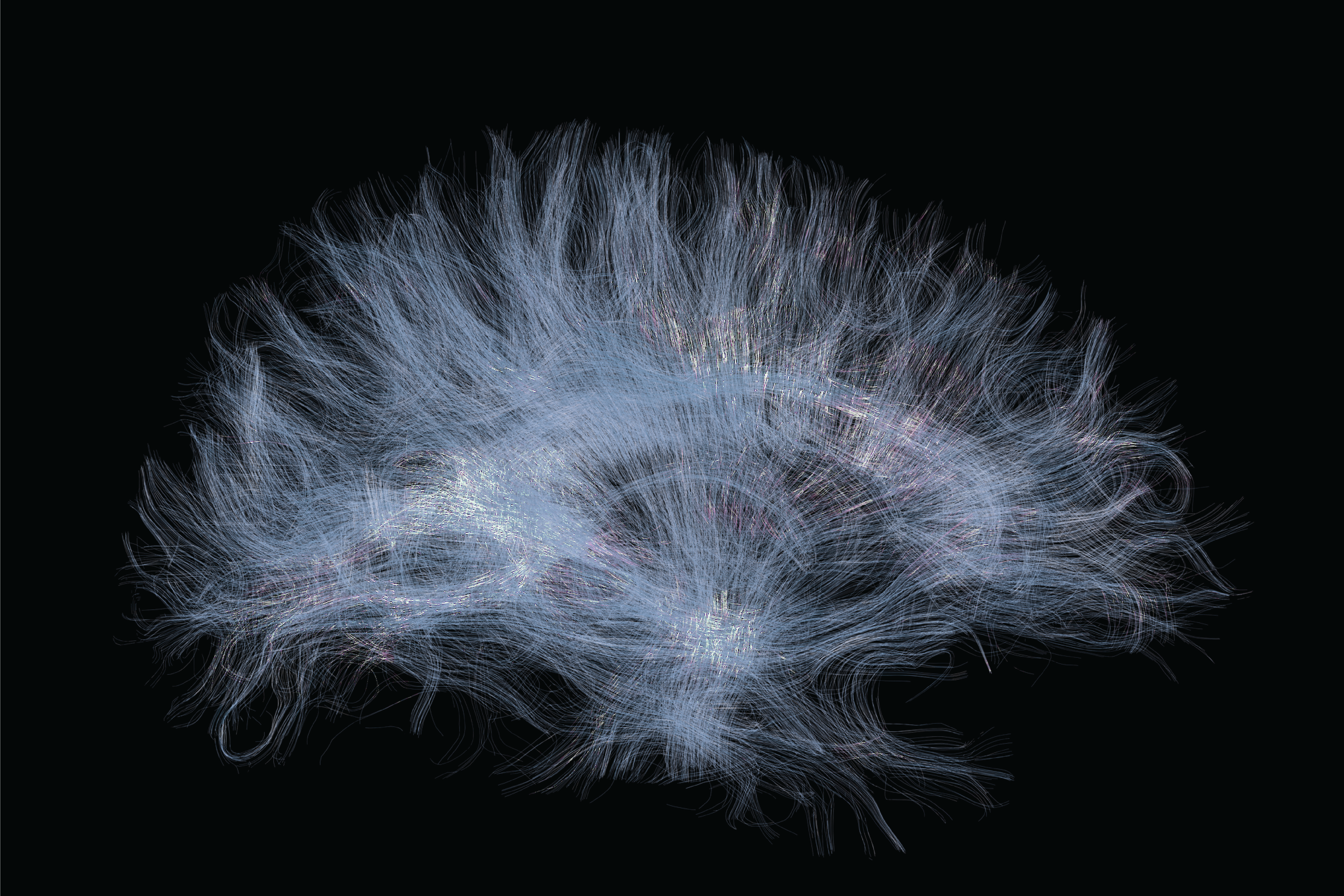
Client
Personal
Year
2022
Media
3D Slicer, Blender
Audience
General Lay Public
About
This was a fun personal project to explore ways to extract tractography data from MRI files out of 3D Slicer. After extracting the data, I was inspired to create a cinematic short using the model, based on the iconic 2018 Macbook Air advertisement.
Final animation
Final renders
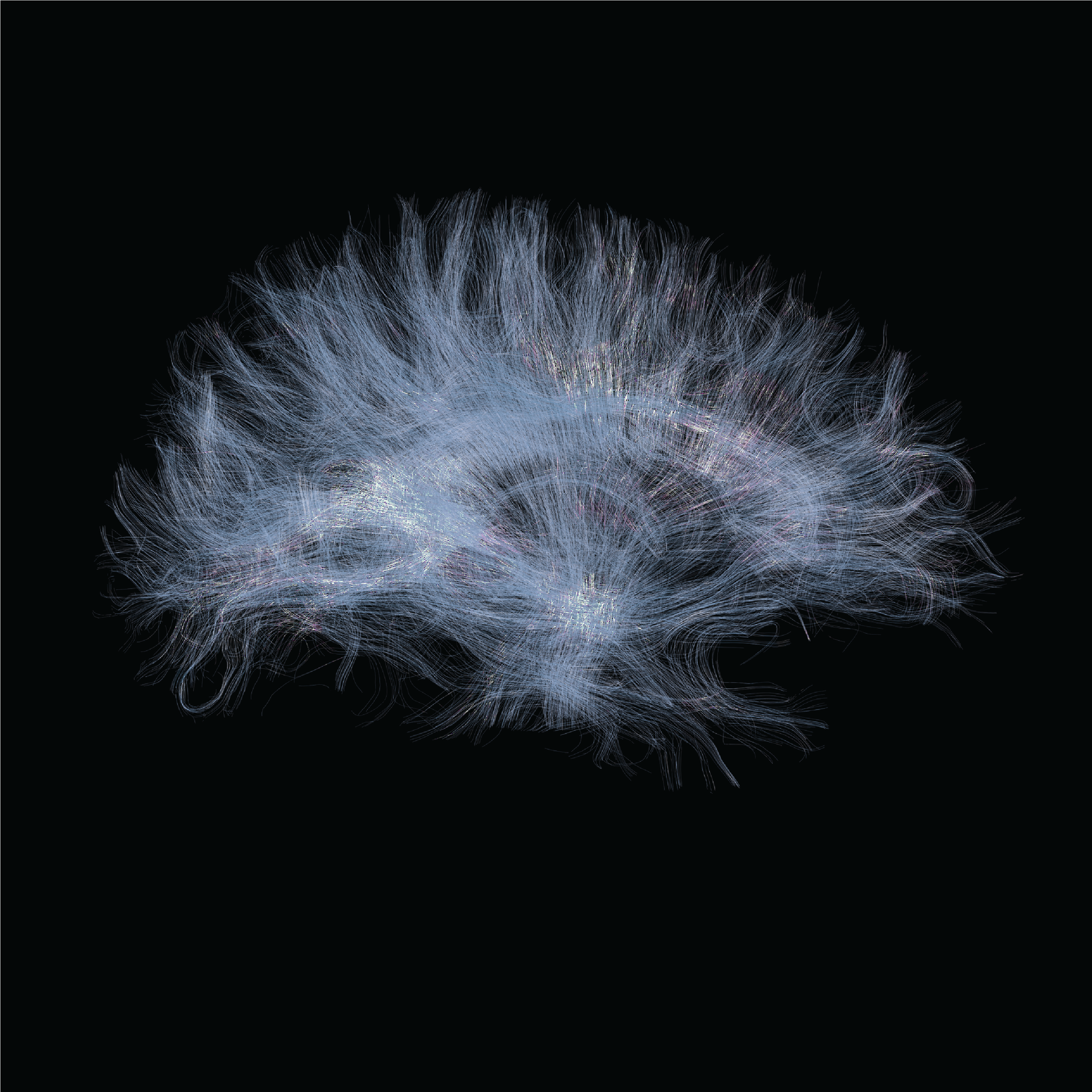
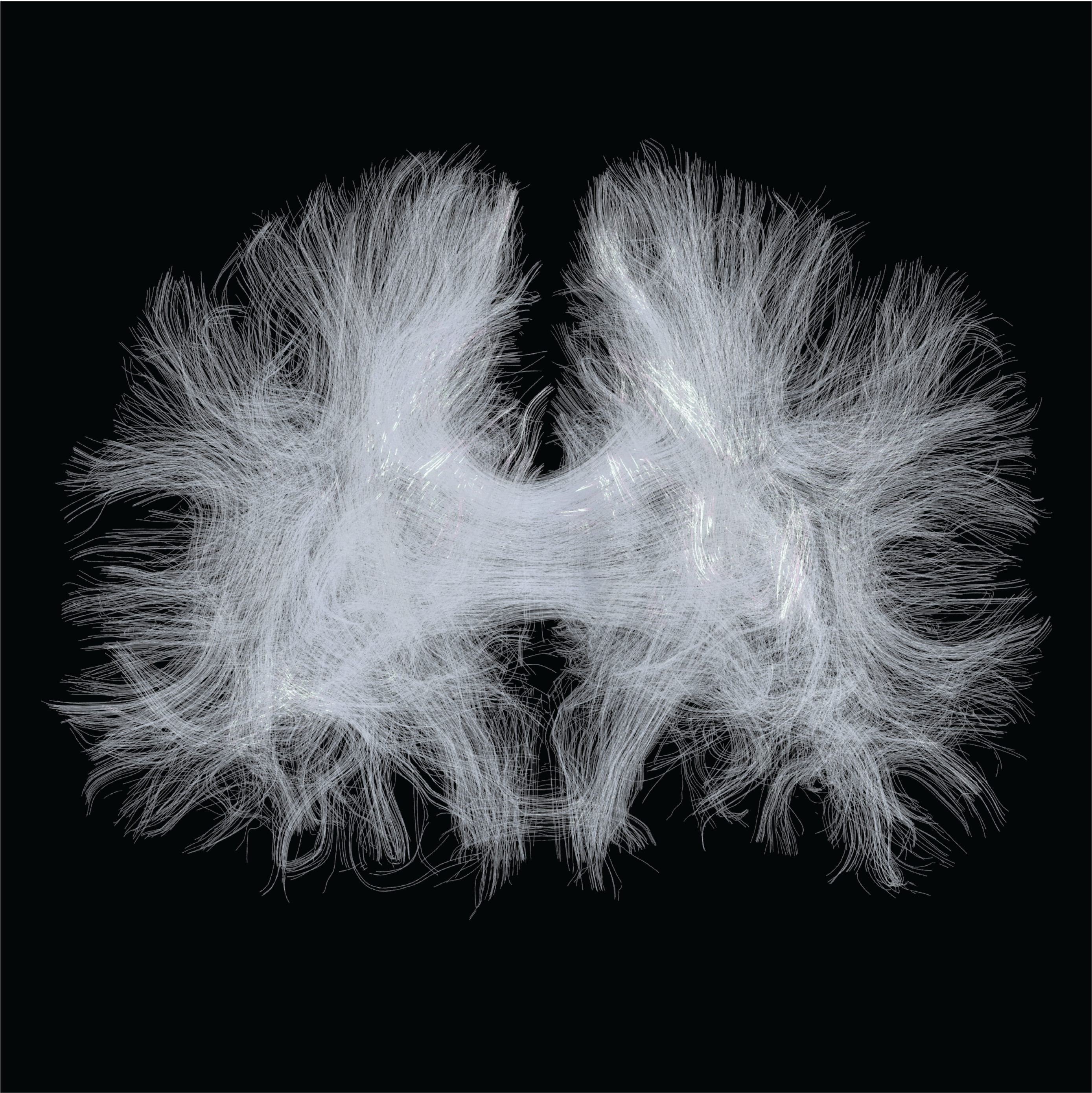
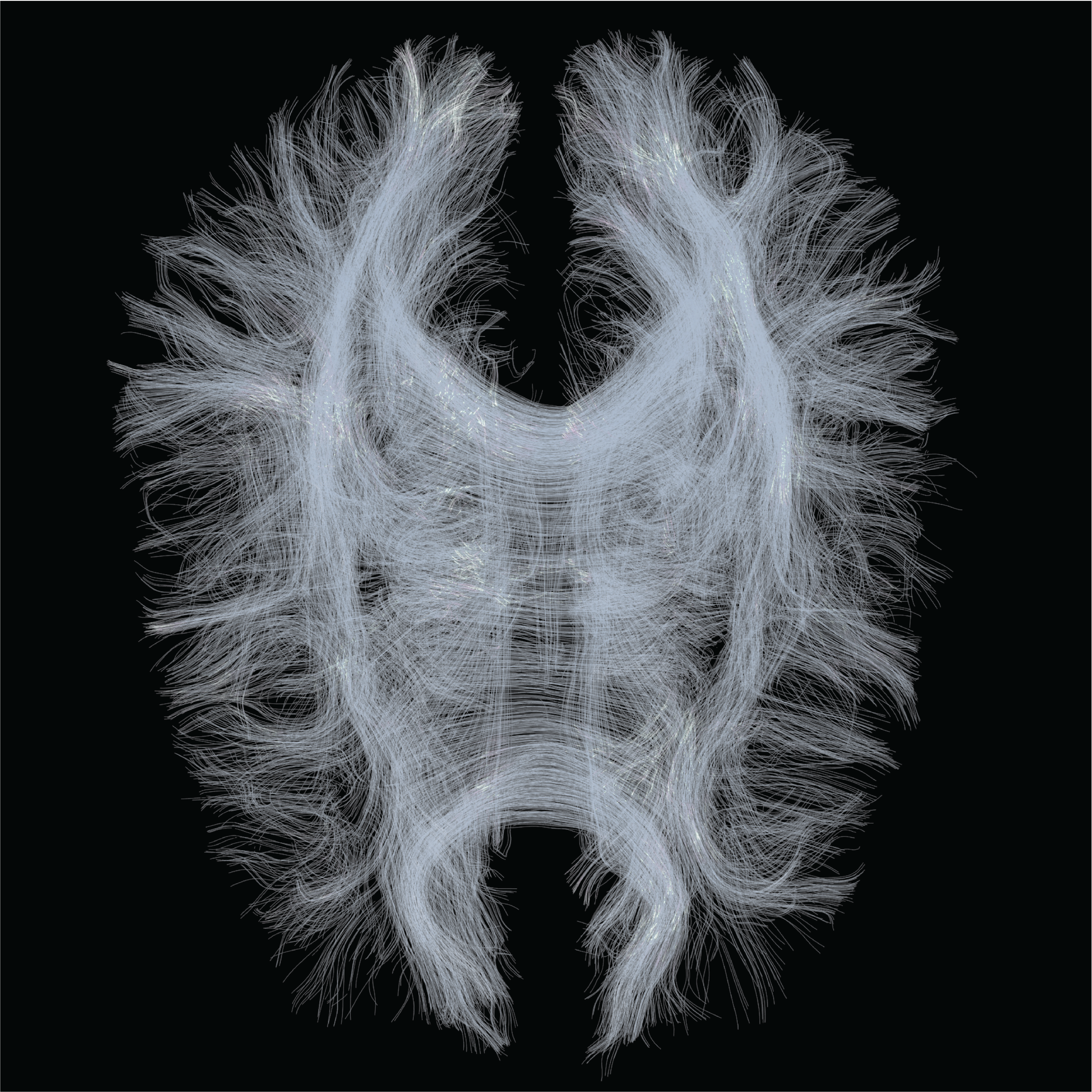
Process
Data Processing
Tractography data was taken from the SlicerDMRI open-source project and the .nrrd file was processed in 3D Slicer to create the tract representation of the brain.
Data processing in 3D Slicer
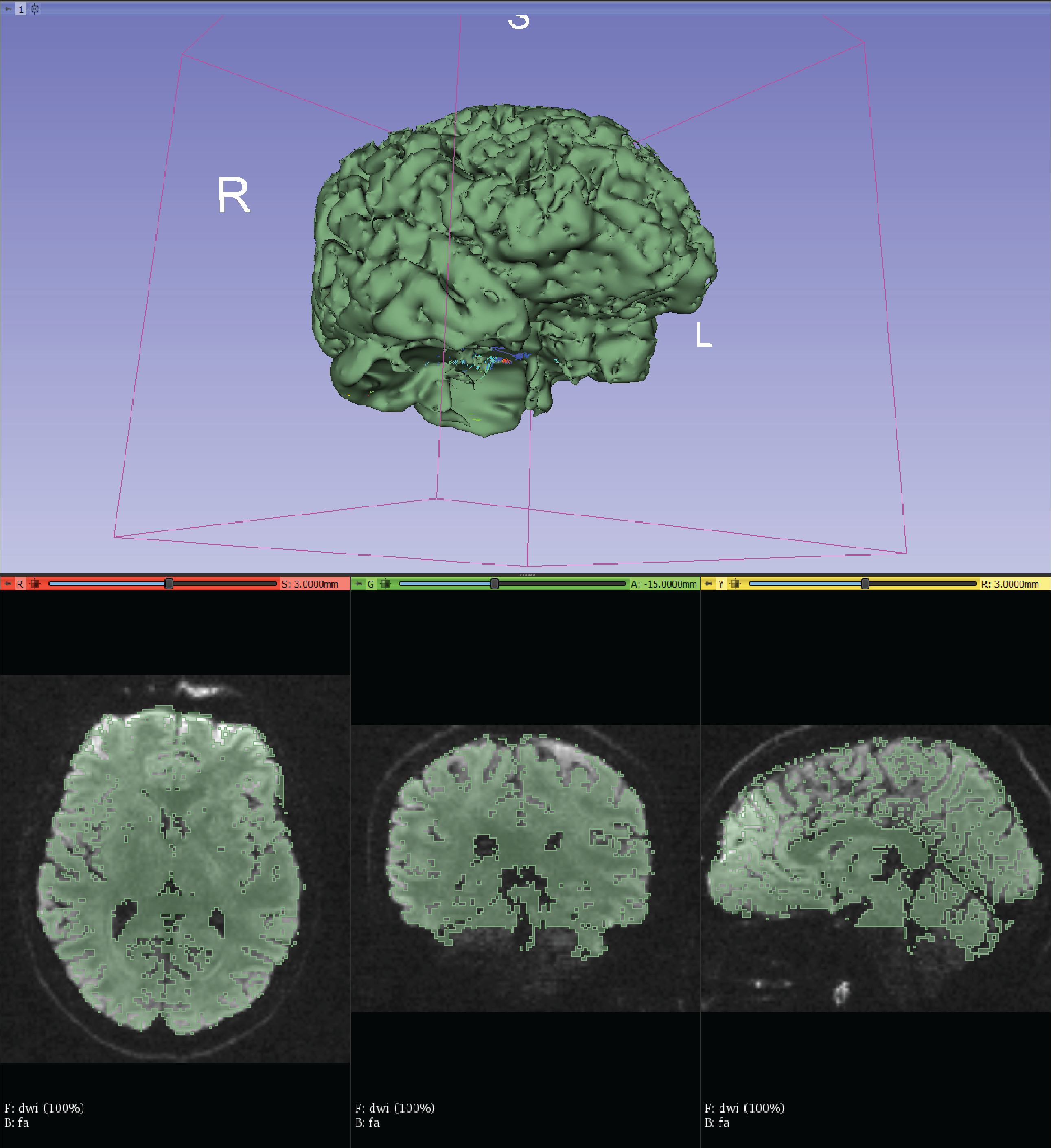
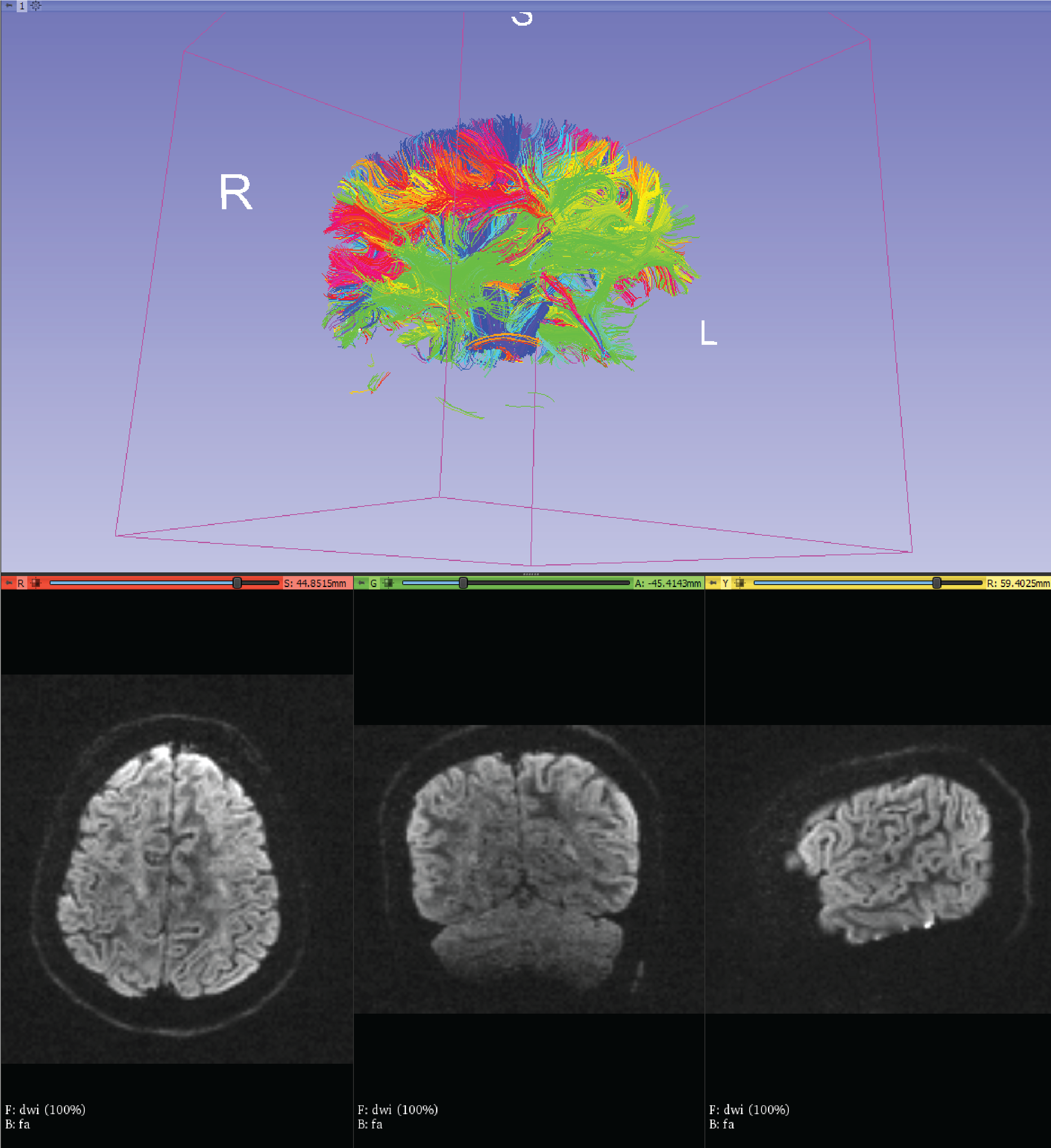
Optimizing Geometry
The processed tracts were exported to Blender as a .stl file. The original 3D file had over 10 million polygons which needed to be optimized in order to animate quickly. Unnecessary polygons were removed and the entire mesh was then converted to a curve which would later help with shading and the final look I was going for. After optimizing, I was able to reduce the mesh to just over 1 million polygons which improved performance significantly. The shading for the neuronal tract firing was done through a procedural node setup. Since I was able to convert the entire mesh into curve data, I was able to map procedurally-made dashed lines along the direction of the curves which gave the impression of action potentials when combined with an emission shader. Using a combination of voronoi and noise textures, I also masked the dashed lines to appear randomly across different segments of the brain throughout the animation.
Scene and shader setup in Blender
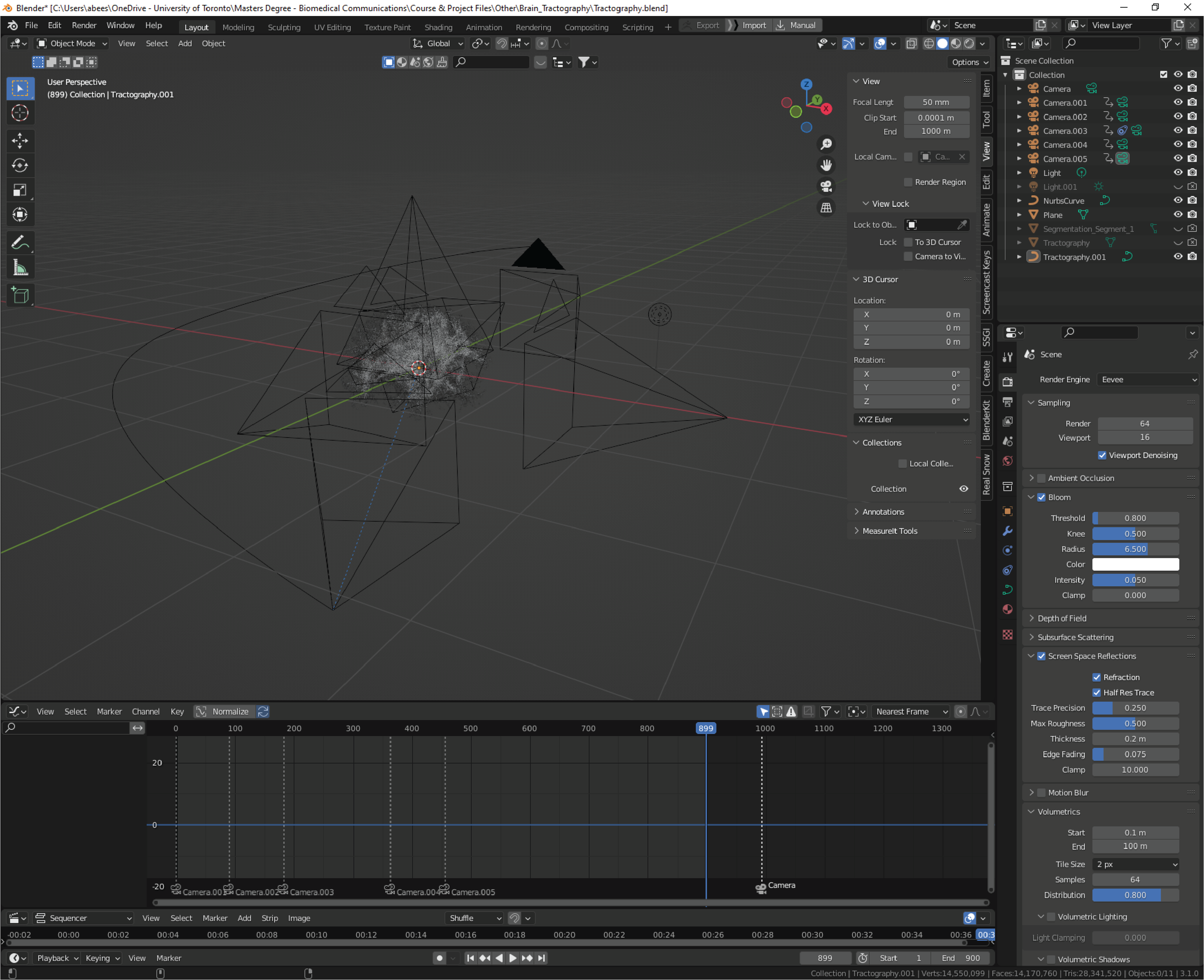
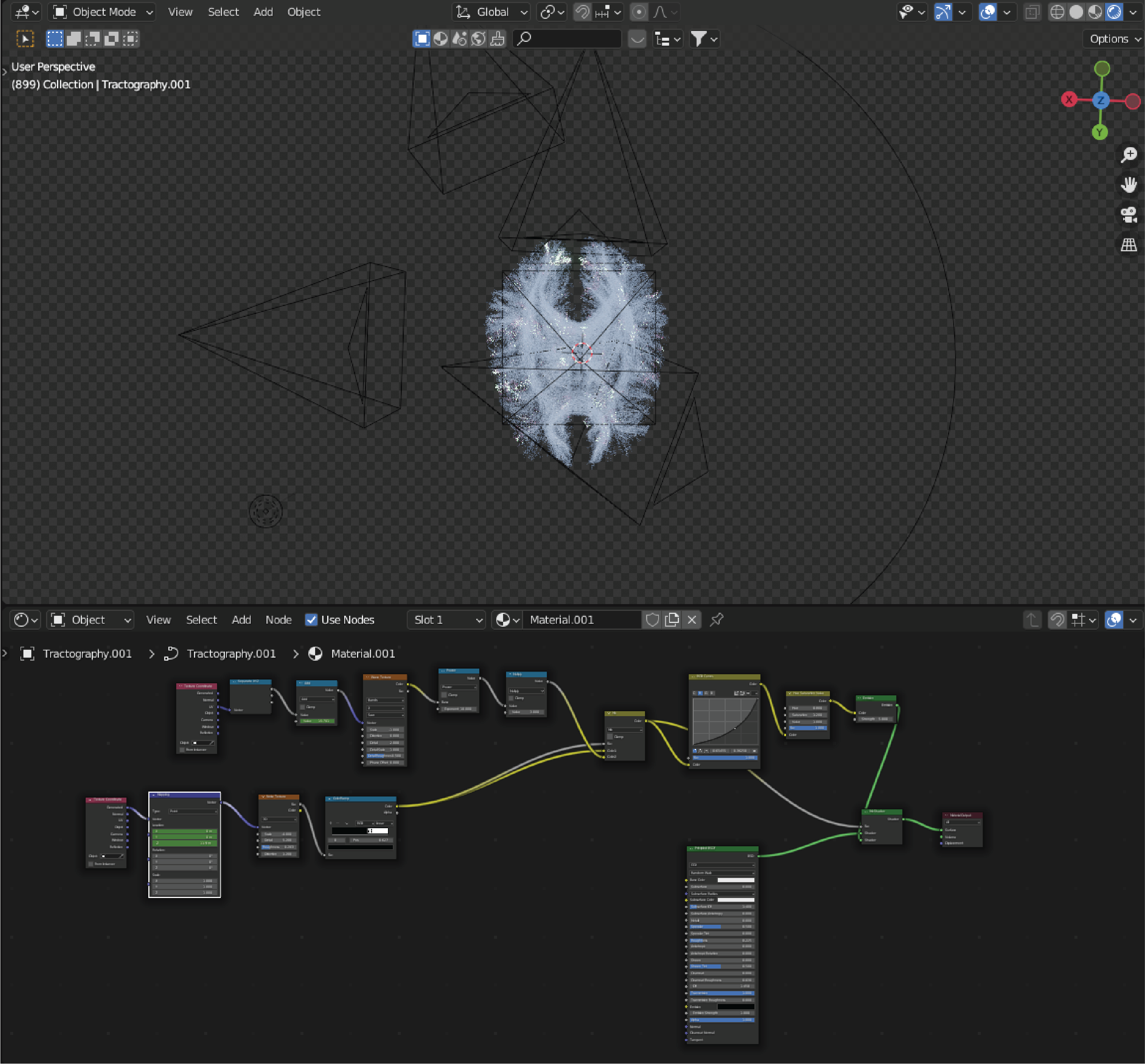
Post-Processing
The animation was fully rendered in Blender's Eeevee engine (~8s per frame) as .exr files (DWAA lossy) in order to retain as much information about the lighting and emission values for fine-tuning in Davinci Resolve. Post-processing mainly involved color correction.
Post-processing in Davinci Resolve

References
- Zhang, F., Wu, Y., Norton, I., Rathi, Y., Makris, N., O’Donnell, L.J., 2018. An anatomically curated fiber clustering white matter atlas for consistent white matter tract parcellation across the lifespan. NeuroImage, 179: 429–447, 2018.